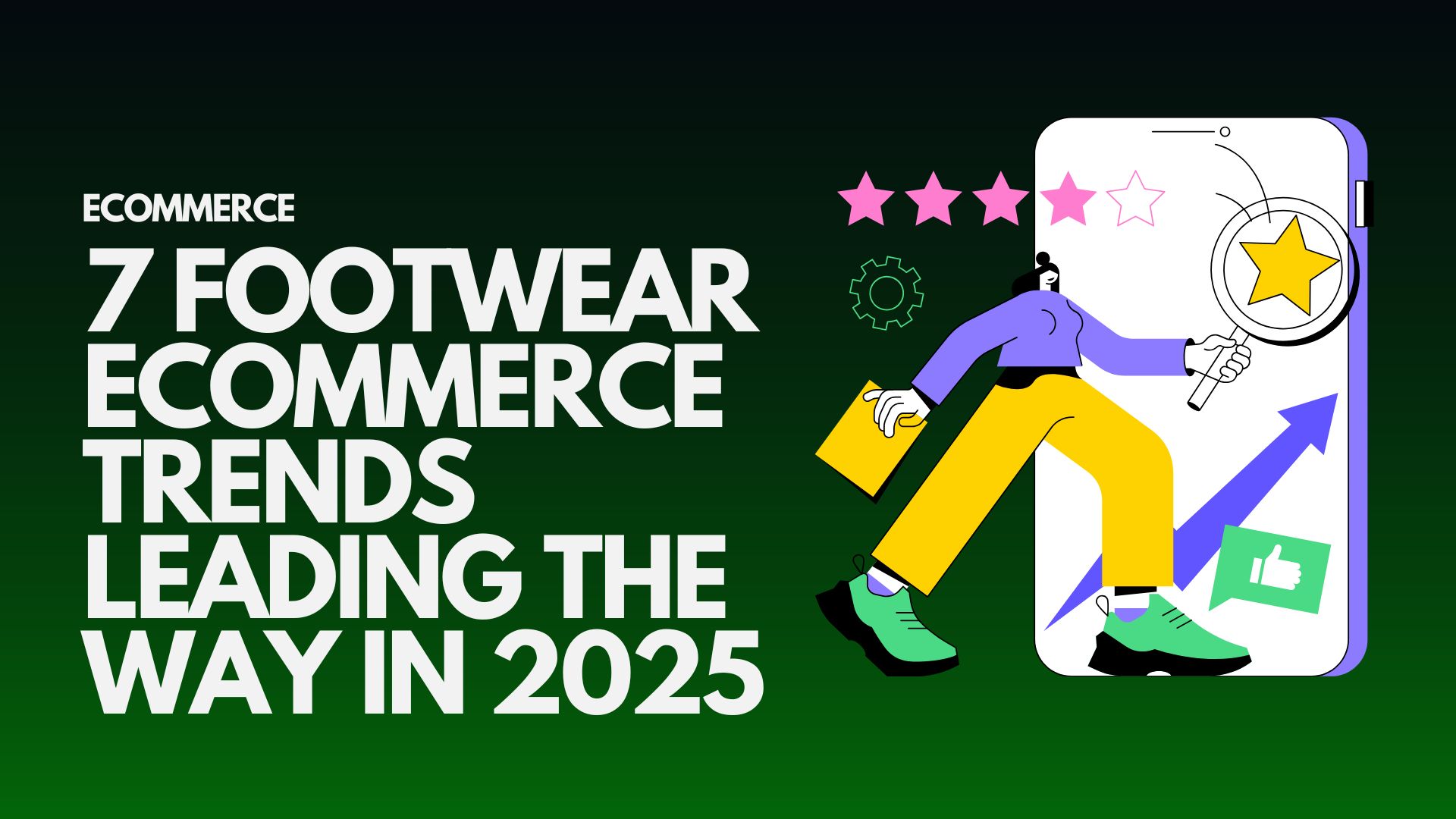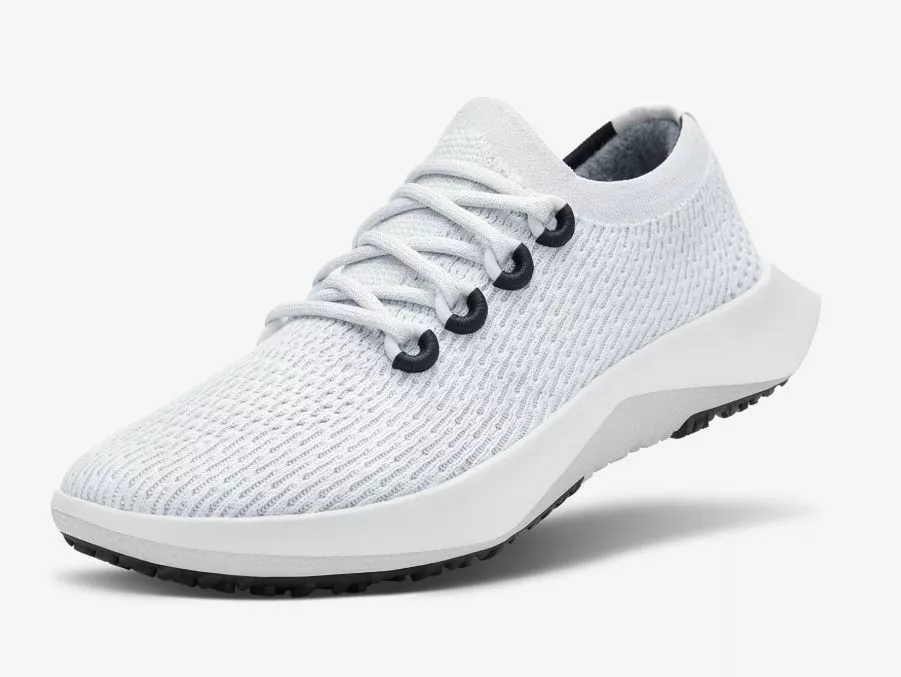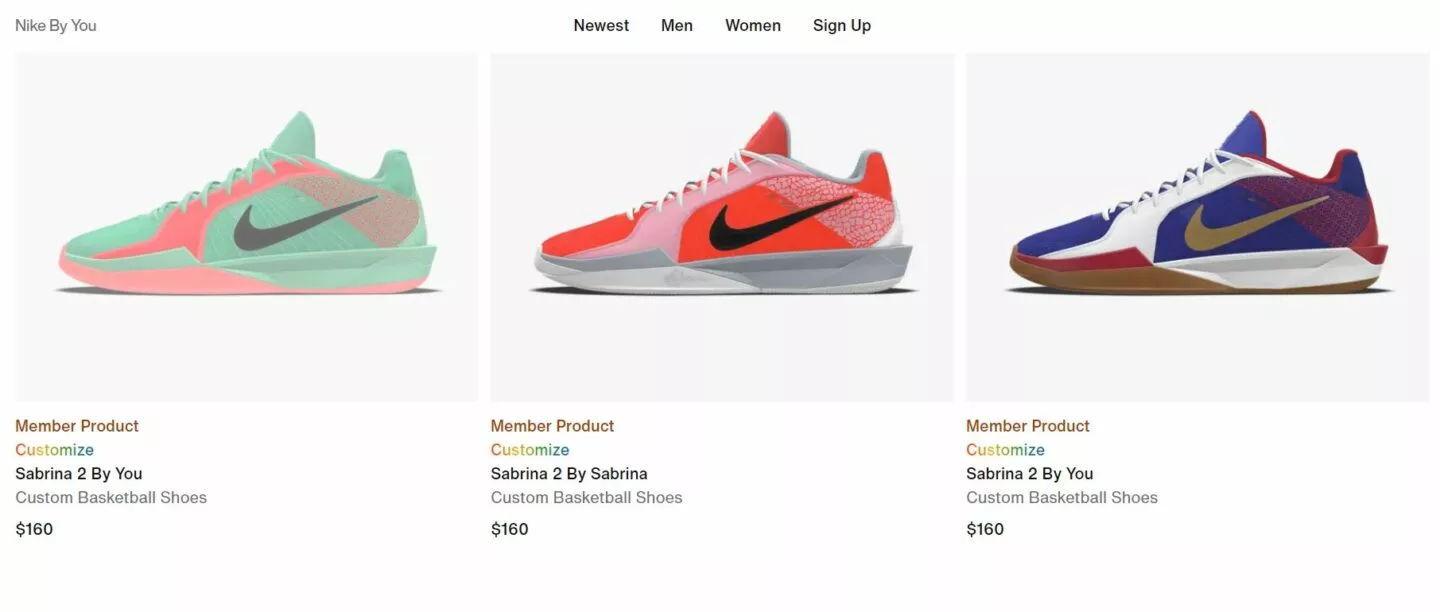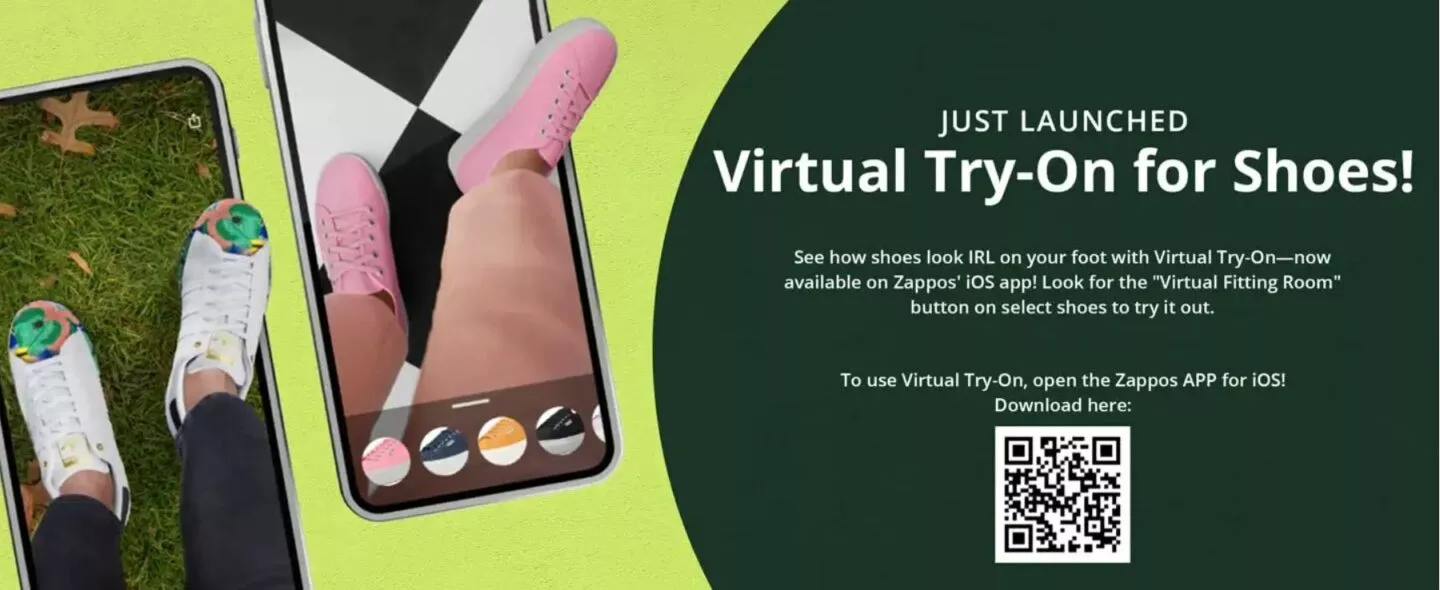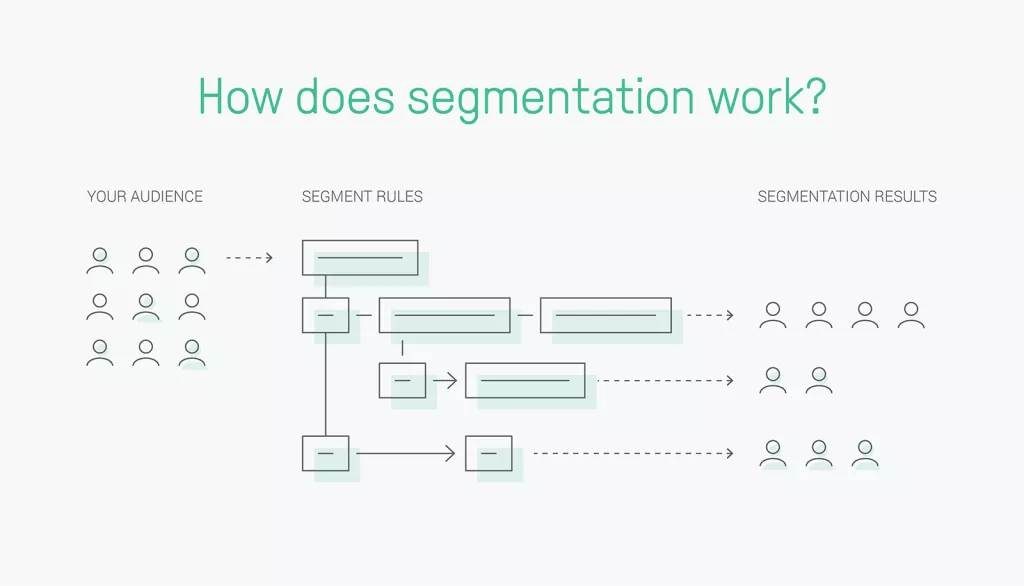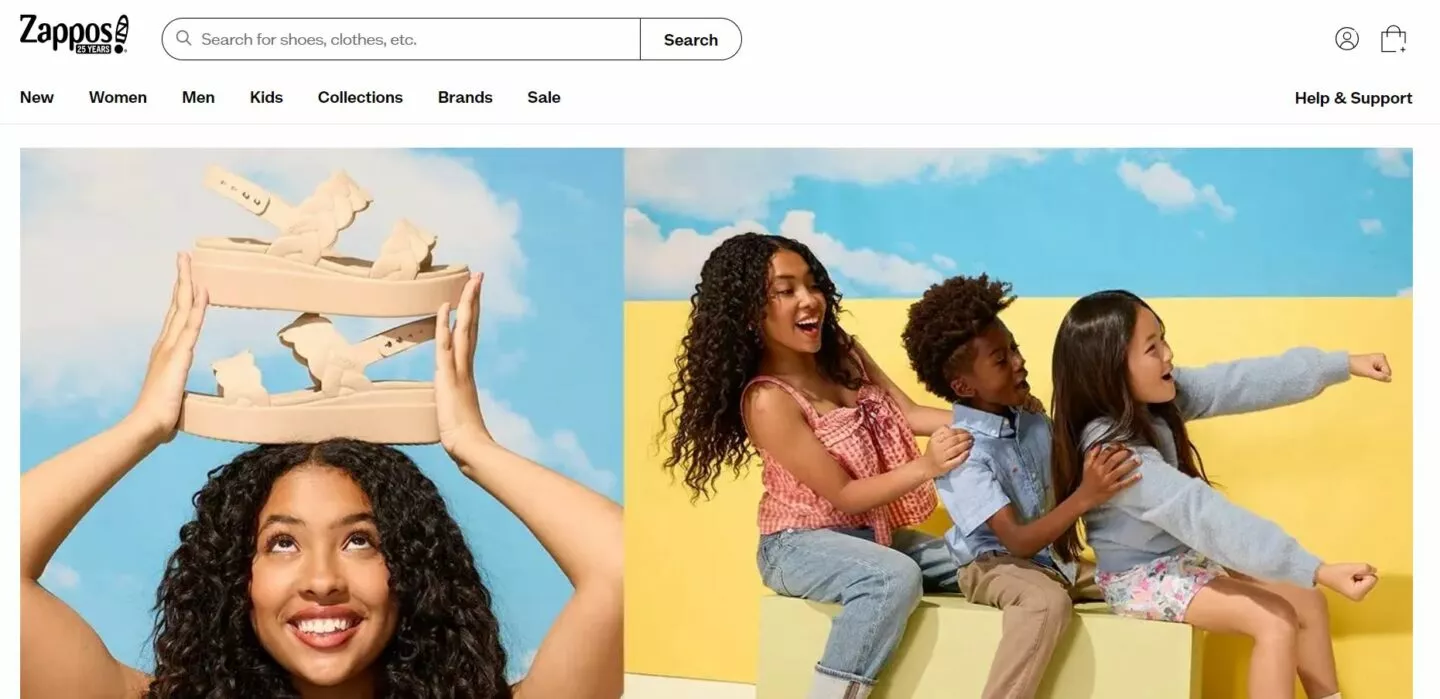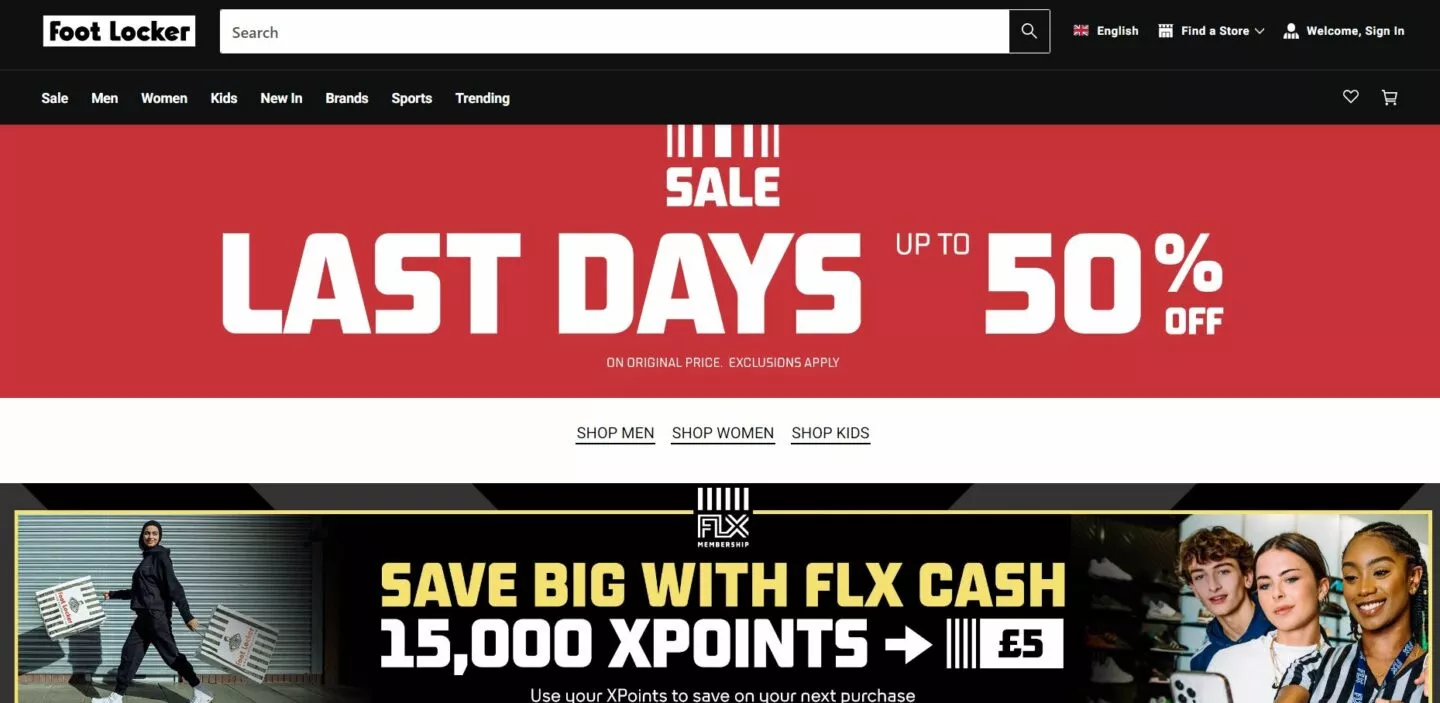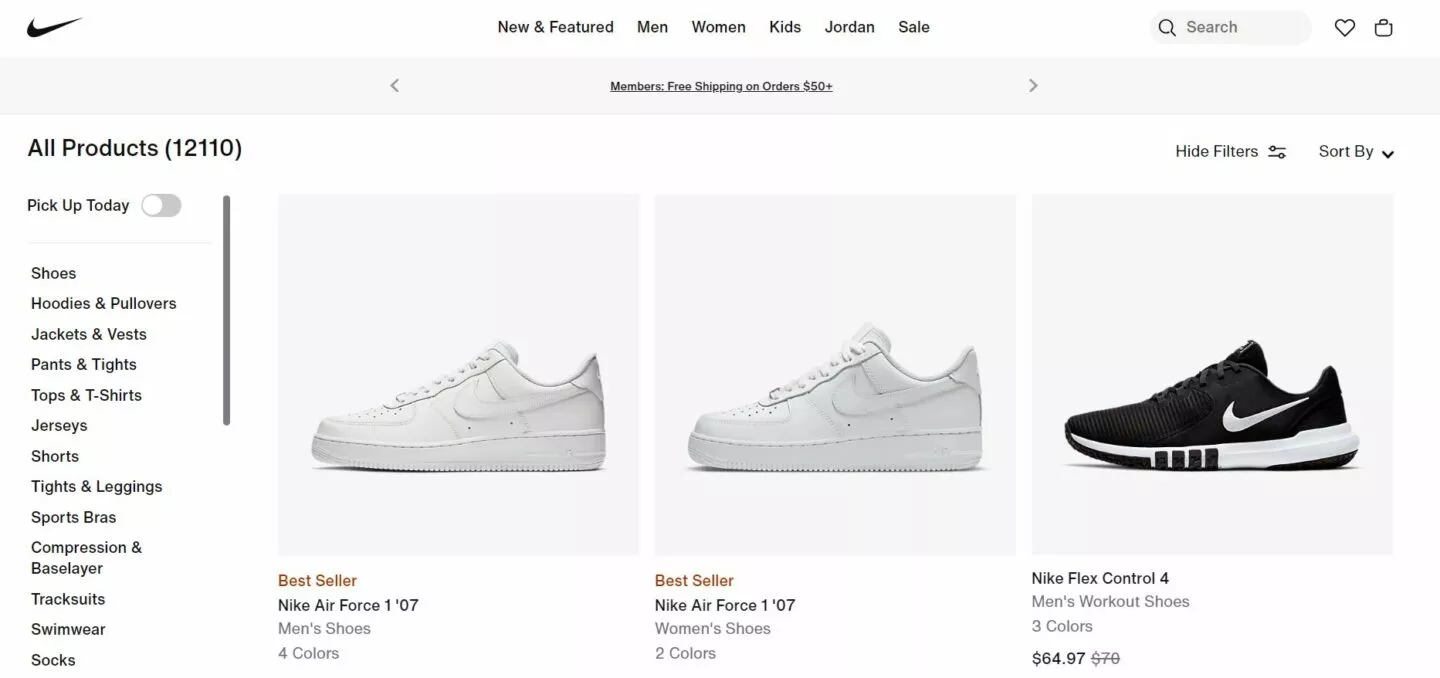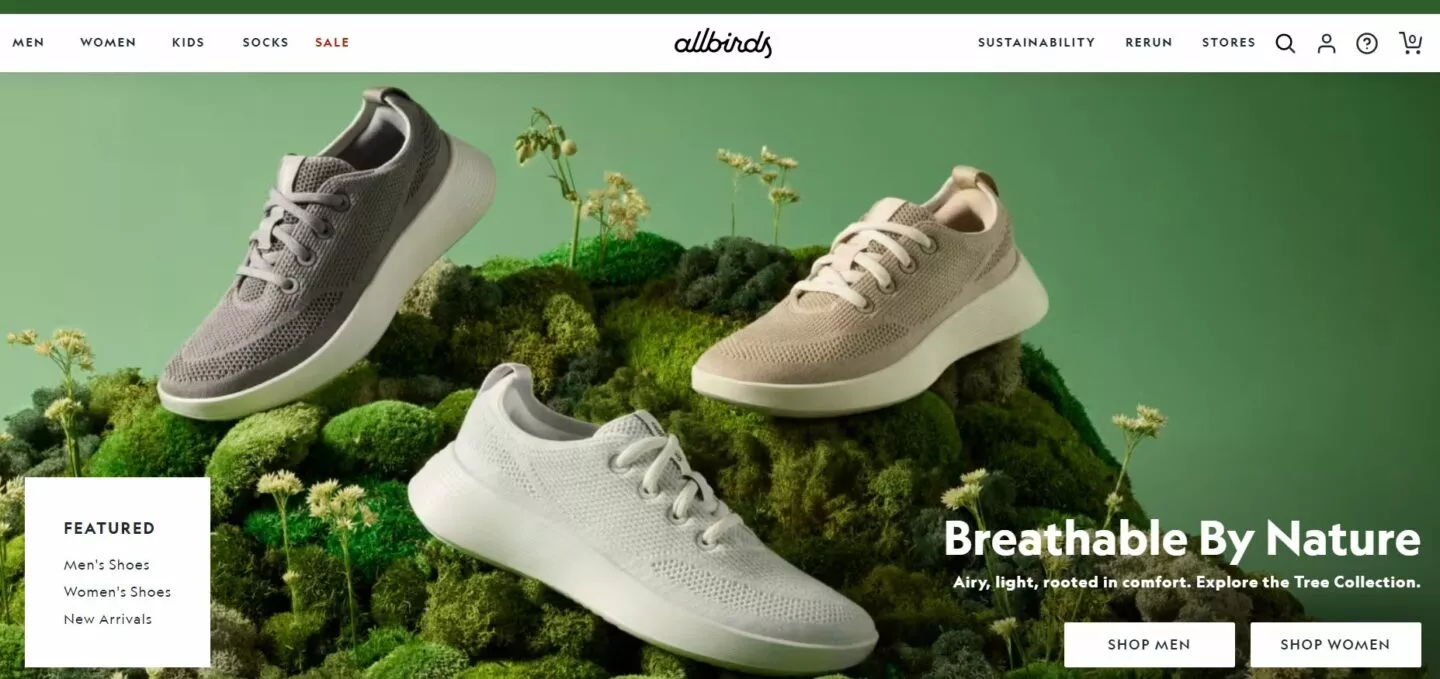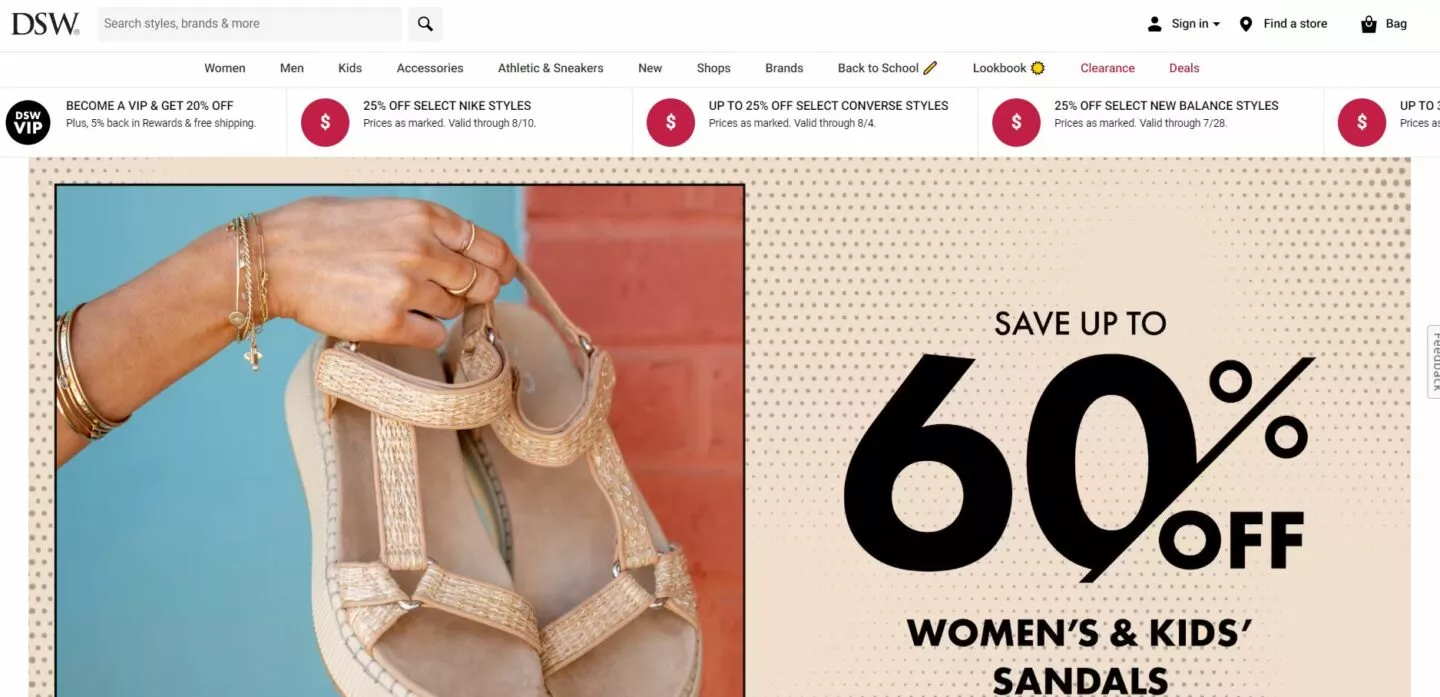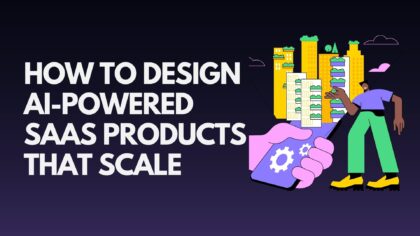7 Footwear Ecommerce Trending Leading the Way in 2025
Hey there, digital trailblazers! The footwear ecommerce market is buzzing with innovation and fierce competition, and at Emerge Digital, we know how crucial it is to learn from the best. Whether you’re building your brand from the ground up or looking to scale, studying top footwear ecommerce brands can give you the edge you need.
In this post, we’ll explore 7 ecommerce footwear Trends that are shaping the industry in 2025, highlight the trends driving their success, and share key takeaways on ecommerce website design and ecommerce digital marketing to help you sprint ahead.
Ready to step into the future of footwear ecommerce? Let’s get started.
Table of Contents
- Overview of Footwear Ecommerce
- The Online Footwear Market
- Top Seven Footwear Ecommerce Trends in 2025
- Footwear Digital Marketing Insights
- Examples of Successful Footwear Ecommerce Platforms
- Conclusion
Overview of Footwear Ecommerce
If you’re eyeing the footwear ecommerce space, let me tell you—you’re not alone. From luxury sneakers to everyday sandals, people are buying shoes online like never before. Why? It’s fast, convenient, and offers a wider selection than most brick-and-mortar stores.
But here’s the catch: while the market is booming, brands still face hurdles like high return rates, sizing inconsistencies, and rising competition. So if you’re planning to step into this space, you need more than just great products—you need smart strategy, cutting-edge technology, and a sharp eye on trends.
A strong foundation begins with smart ecommerce website design and a smooth ecommerce UI/UX design experience. Your site needs to look great, load fast, and convert visitors into loyal customers. Platforms like Shopify and WooCommerce dominate the space, and choosing the right one—along with reliable Shopify website development support—can give your brand a serious edge.
To stand out in a crowded market, don’t underestimate the power of ecommerce digital marketing. From SEO and content to performance marketing and social media, your online presence should work just as hard as your product lineup.
The Online Footwear Market
The global online footwear market is massive—and it’s still growing fast. According to recent studies, it’s expected to surpass $530 billion by 2027. What’s fueling this surge?
- Increasing internet penetration
- Mobile-first shopping behavior
- Brand collaborations and influencer marketing
- Eco-conscious buying habits
This boom is exciting, but let’s be real: the space is getting crowded. Differentiating your brand is no longer optional—it’s survival.
That’s where having the right ecommerce development approach comes into play. Whether you’re building from scratch or revamping, technical flexibility and scalability matter. And if you’re already selling on one platform and eyeing another for better performance, a well-planned ecommerce migration—say from Opencart to Shopify—can set the stage for serious growth.
Pair that with strong post-launch support like ecommerce maintenance in Mumbai, India, and you’re not just building a store—you’re building a resilient, conversion-focused brand.
Top Seven Footwear Ecommerce Trends in 2025
Let’s break down the three main categories of trends—market and consumer, technological, and marketing—that will shape the future of online shoe shopping.
Market and Consumer Trends
1. Focus on Sustainable and Ethical Practices
More and more customers want to know: Where are these shoes made? Are they sustainable? If you’re not already investing in eco-friendly materials, ethical sourcing, or carbon-neutral shipping—now’s the time.
What You Can Do:
- Highlight ethical practices on product pages
- Use biodegradable packaging
- Collaborate with sustainability influencers
As conscious consumerism rises, brands that lead with transparency are winning. And this shift also impacts your backend—tools like custom ecommerce development can help integrate eco-certifications, carbon calculators, or green shipping options directly into your site.
If you’re in the growth stage, consider how your store’s backend supports these initiatives. Whether you’re on WooCommerce, Shopify, or another platform, seamless integration with apps and eco-features is essential—especially if you’re preparing for a Shopify to WooCommerce migration service.
And remember, consumer trust is earned not just through messaging, but through experience. Make sure your store’s infrastructure supports the values you promote.
2. Athleisure Transitioning into Mainstream Luxury
Athleisure is no longer just gym wear—it’s evolved into a full-blown lifestyle. High-end fashion houses are embracing the trend, and consumers are all in. Sneakers are now paired with blazers, joggers with heels—it’s all about blending comfort with style.
Quick Tip:
If you’re selling sneakers or sporty styles, consider marketing them as fashion statements. Think lifestyle shoots, influencer collabs, and exclusive drops.
To elevate your brand positioning, invest in high-quality visuals from a professional ecommerce photography agency. Show your footwear in real-world, high-fashion contexts. And with proper CRO optimization, you can ensure that all that traffic from social media and influencer campaigns actually converts.
Pair that with seamless browsing and checkout—especially for mobile shoppers—and you’re right where the modern luxury-athleisure customer expects you to be.
Technological Trends
3. Customization
Consumers love products that reflect their unique style and personality. Customizable options—like color palettes, materials, or even monogramming—can massively boost engagement and brand loyalty.
You Might Try:
- Letting users design their own shoes in 3D
- Integrating a customization tool into your ecommerce site
To make this work seamlessly, your backend needs to be robust. A strong ecommerce UI/UX design ensures users can navigate these features without friction. For stores built on platforms like WooCommerce or Shopify, this may require custom ecommerce development to implement advanced product configurators.
And if you’re planning a platform switch to better support such features, a smooth Shopify to WooCommerce migration service can help retain your existing data and structure while preparing you for next-level customization.
Remember, in 2025, personalization isn’t just a trend—it’s an expectation.
4. Augmented Reality (AR) and Virtual Try-On
“I like these, but will they look good on me?” That’s the one question AR solves beautifully.
Why It Works:
- Reduces return rates
- Increases buyer confidence
- Boosts conversions, especially on mobile
Big players like Nike and Adidas are already ahead of the curve—letting users “try on” shoes virtually through their phones. It’s not just a novelty; it’s a powerful decision-making tool.
To implement this effectively, make sure your site’s performance is rock-solid. A well-executed ecommerce website development strategy is key to supporting AR integrations without slowing things down.
If you’re aiming to future-proof your online store, working with a team experienced in Shopify website development or Woocommerce development can make integration smoother and scalable.
Virtual try-on is quickly moving from “nice-to-have” to “must-have”—especially as mobile commerce continues to dominate the landscape.
Marketing Trends
5. Segmentation and Personalization
Generic marketing? That’s so 2015. In 2025, it’s all about targeting. Show me what I want, when I want it—and if you nail that, you’ve got a customer for life.
You Can Start With:
- Behavior-based email campaigns
- Personalized product recommendations
- Retargeting ads based on browsing history
To make segmentation and personalization really work, invest in an e-commerce digital marketing strategy that’s data-driven and customer-centric. Using performance analytics to understand your audience’s preferences can boost your ROI significantly.
Also, integrating your marketing tools with your ecommerce platform—whether through Shopify website development or WooCommerce development—ensures your campaigns are seamless and timely.
Personalized marketing isn’t just a trend—it’s the foundation of long-term ecommerce success.
6. Omnichannel Ecommerce Shoe Marketing
Omnichannel isn’t just a buzzword—it’s a strategy. Today’s consumers expect to move seamlessly between your Instagram page, mobile app, desktop store, and even physical outlets (if you have them).
Action Steps:
- Sync inventory across platforms
- Ensure consistent branding everywhere
- Allow cart recovery across devices
To pull this off smoothly, consider investing in custom ecommerce development that integrates all your sales channels into one streamlined system. This way, your inventory and customer data stay up-to-date in real time.
Plus, a strong ecommerce maintenance service ensures your systems keep running flawlessly, providing a consistent customer experience no matter where they shop.
An effective omnichannel strategy means your brand stays front and center—whether your customers are scrolling on their phone or walking into your store.
7. Mobile Commerce
If your footwear store isn’t optimized for mobile, you’re missing out—big time. Over 70% of ecommerce sales now happen on smartphones.
To Win on Mobile:
- Use responsive design
- Simplify the checkout process
- Include one-click buy and mobile wallets
A smooth mobile experience starts with ecommerce UI UX design that prioritizes fast loading times and easy navigation on smaller screens. Pair that with expert Shopify website development or WooCommerce development to implement features like mobile wallets and one-click purchasing seamlessly.
Mobile commerce isn’t just a channel anymore—it’s the main event. Make sure your store is ready to meet customers where they are.
Footwear Digital Marketing Insights
I’ve worked with brands that made common mistakes—like focusing too heavily on product photos while ignoring user experience. So here’s what I suggest:
- Leverage Influencer Marketing: Especially micro-influencers in fashion and fitness niches
- Use Social Proof: Reviews, testimonials, and UGC (user-generated content) convert like crazy
- Email is NOT dead: A welcome series, abandoned cart recovery, and VIP sneak peeks are gold
- SEO your Product Pages: Include long-tail keywords like “vegan leather running shoes” or “wide fit hiking boots”
To get these right, strong ecommerce digital marketing expertise is essential. Coupling that with solid CRO optimization and a well-crafted ecommerce website design ensures visitors not only come but also stay and convert.
Remember: it’s not about shouting louder; it’s about connecting better.
Examples of Successful Footwear Ecommerce Platforms
Let’s take a look at who’s doing it right:
Zappos
Famous for unmatched customer service, free returns, and a massive inventory, Zappos has built its reputation by putting the customer first. Their easy-to-navigate site and hassle-free return policy keep shoppers coming back. Zappos also invests heavily in ecommerce maintenance services to ensure site uptime and fast load speeds, critical factors for customer satisfaction. Their customer-centric approach shows why seamless user experience matters as much as product variety in ecommerce website development.
Foot Locker
Foot Locker perfectly blends their physical retail stores with a powerful online presence, mastering the omnichannel approach. Their seamless inventory sync and consistent branding across all platforms mean customers can shop in-store or online without a hitch. This level of integration depends on smart custom ecommerce development that links POS systems with ecommerce platforms. Foot Locker’s ability to provide personalized promotions based on shopping habits also highlights the importance of advanced marketing automation in ecommerce.
Nike
Nike stays at the forefront of ecommerce technology by offering customization options that allow users to design their own shoes. Their AR-powered virtual try-on feature enhances buyer confidence, while their mobile app gamifies shopping with rewards and exclusive content. Nike’s focus on innovative ecommerce UI UX design ensures a sleek, user-friendly experience that keeps customers engaged. The brand’s integration of AR and customization tools requires robust ecommerce development, showcasing the importance of a tech-savvy backend.
Allbirds
Allbirds has set a new standard for sustainability in footwear ecommerce. Their minimalistic, eco-friendly branding combined with clear messaging about sustainable materials appeals directly to environmentally conscious consumers. They back this up with engaging content and transparent sourcing stories that create trust and authenticity. Allbirds’ marketing success illustrates how strategic ecommerce digital marketing can effectively communicate brand values and build a loyal customer base focused on ethical shopping.
DSW (Designer Shoe Warehouse)
DSW leverages data and technology like a pro to drive customer loyalty and repeat purchases. Their loyalty program, combined with personalized email campaigns, keeps customers coming back for more. Their team constantly optimizes conversion rates using CRO techniques tailored to customer behavior insights. This combination of data-driven marketing and technical optimization highlights the critical role of CRO optimization and targeted ecommerce digital marketing in maintaining a competitive edge in the footwear market.
Conclusion
The footwear ecommerce world is exciting, fast-moving, and full of potential. But as you’ve seen, it’s also complex. Whether you’re a D2C startup or a scaling shoe brand, staying ahead means embracing trends—not just watching them.
So, what should you do next?
- Audit your current online experience with a focus on ecommerce website design and ecommerce UI UX design to make sure your store is user-friendly and conversion-optimized.
- Tap into tech like AR and personalization to give your customers a unique shopping journey.
- Reimagine your mobile UX—mobile commerce is where most buyers live today, so responsive design and seamless checkout matter.
- Invest in engaging content and influencer partnerships as part of your ecommerce digital marketing strategy.
- And most importantly—stay agile, continuously evolving your site with expert ecommerce maintenance and development support.
If you’re ready to grow your footwear brand online, now’s the perfect time to lace up and sprint ahead.
Explore more
The 15 Best Sustainable Shopify Stores to Shop in 2025: Eco-Friendly Brands Leading the Way
15 Shopify Health Brands Redefining Wellness in 2025
15 Essential Features for Your Health and Wellness Store

About the Author
Priya, Co-Founder of Emerge Digital, is a UI/UX enthusiast with 15 years of experience. She’s passionate about crafting user-centered designs that exceed expectations, delivering meaningful and engaging digital experiences. At Emerge Digital, Priya blends her deep expertise with a commitment to client and user needs, driving innovative design solutions.
